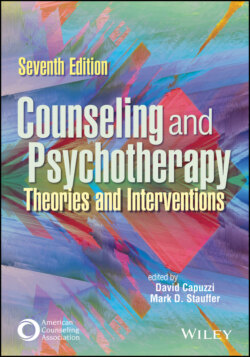Читать книгу Counseling and Psychotherapy - Группа авторов - Страница 86
MAJOR CONSTRUCTS Connection and Disconnection
ОглавлениеAccording to RCT, all people are born with an innate need to connect with others. In fact, contemporary strides in neuroscience research now recognize that biological factors influence a human being’s essential need and desire for connection (Banks, 2015; Jordan, 2018). As RCT scholar and cofounder Judith Jordan describes, human newborns enter the world prepared to connect. Just as plants need food and water to survive, people need others and experience pain in the absence of connection (Jordan, 2018; Jordan & Duffey, 2020). Part of the human dilemma, however, rests with the juxtaposition of a culture that confuses interdependence with a pathologized dependency, one that glorifies lone-wolf independence. Consider the archetype of the rugged individualist who, in spite of much adversity, forges forward, often in isolation, and generally with perceived competency. How might this archetypal figure impact the relational lives of many men? Alternatively, how might this figure influence societally inflicted perceived deficiencies in women?
In contrast to this individualistic model of human development, RCT proposes a model of interdependence. Unlike theories that promote individuation and autonomy as the cornerstones of growth, RCT purports that growth occurs through and within connections. As people become increasingly relationally competent, they flourish (Jordan, 2018; Jordan & Duffey, 2020). In this respect, growth-fostering relationships have the power to help heal immeasurable hurts and provide the motivation to live enriching, productive lives. Counselors who conceptualize client dynamics using a relational-cultural frame expand possibilities for clients to navigate societal, cultural, and power-based complexities and help them make sense of the disconnections that invariably arise in life.
